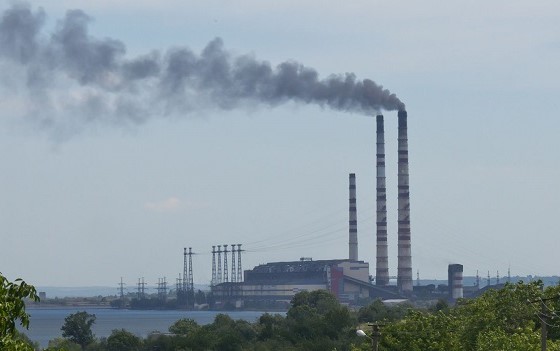Academic Year 2016/17
Hannah Abdel-Hadi (2017)
Recommendations to alleviate the negative
impacts of deforestation on biosphere integrity
and ecosystem services in the Malaysian Rainforest
Targeted at: Dr Rosmadi Bin Fauzi, University of Malaya
Executive Summary
The Malaysian rainforest and the biodiversity within it are being destroyed by deforestation, mainly for palm oil plantations, which is putting pressure on the biosphere integrity planetary boundary. Biodiversity off-setting, subsidisation of domestic palm oil companies and regulation of international palm oil companies are policy options available to help solve this problem, however, biodiversity off-setting is inappropriate and too complex for Malaysia. Policy recommendations that are most effective bring together subsidising domestic palm oil companies to allow them to become more productive, while simultaneously regulating international palm oil firms to both prevent unethical practices and protect the more sustainable, domestic firms. Most prominently, further research and global collaboration within and between universities such as the University of Malaya and the University of Sao Paulo is needed to learn from success stories such as the slowdown of deforestation in the Amazon rainforest. This aims to create a backbone for sustainable and thought-out environmental policies in the future.
Nicola Blasetti (2017)
Reducing Biodiversity Loss in Australia:
Reintroducing predators
Targeted at: Mr Gregory Andrews, Australia’s Threatened Species Commissioner
Executive Summary
Biodiversity is of key importance for the existence of human beings, and its loss could cause unprecedented damage to ecological processes, with disastrous consequences. Predators play a pivotal role in biodiversity conservation since they regulate trophic cascades with their mere presence in their ecosystems. Therefore, if the presence of apex predators is threatened by human activities, as it has been over the past years, the whole ecosystem will face an even worse degradation in the future. However, the presence of illegal poaching and lethal control still causes incredible damages to predator populations. Indeed in Australia, in order to protect endemic endangered species, the government has employed policies (e.g. culling), which have over time threatened other animals such as the dingo, the only local apex predator. The lethal control of dingoes has had a negative impact not only on dingo packs, but also on herbivores and plants, and has led to the diffusion of invasive mesopredators. The reintroduction of dingoes would therefore restore the right balance in their ecosystem, limiting the spreading of herbivores, suppressing mesopredators and indirectly protecting local endangered species. In order to mitigate the negative effects that predator reintroduction might have, such as threatening livestock and human communities due to the high number of new predators, it is necessary to implement specific strategies. The use of livestock guarding dogs is the most functional method since they have been shown to reduce predation by 11-100%. Moreover, research aiming at gaining a deeper knowledge of the process of predation is also becoming increasingly necessary to make predator reintroduction policies more reliable.
Magdalena Breyer (2017)

Land-System Change: The Catalyst of Climate Change and Biodiversity Loss A Corporate and Market-Based Approach to the Reduction of Deforestation
Targeted at: Attendees of the United Nations Climate Summit, specifically governments and transnational corporations
Executive Summary
It has been proposed that no more than 15 percent of global ice-free land should be converted to cropland to avoid irreversible changes to the environment. The primary concern arising from land-system change is its close relation to other planetary boundaries, such as climate change, biodiversity loss and freshwater use. It has immense impact on sustainable development, as it directly affects three out of the eight other planetary boundaries. The conversion of rainforest to pastures and cropland results from increasing agricultural demands. This results in a loss of biodiversity, which provides regulation for ecosystems, as well as services to humans, including flood and erosion prevention. The rainforest regulates climate change as it curbs carbon emissions. The livestock sector releases high amounts of methane and nitrous oxides, as well as harmful waste products. This has led to soil and water degradation. As land health regulates soil health and nutrients, deforestation and agriculture remove these services. This threatens future agricultural endeavours and environmental health, as the soil does not retain arability. Existing forms of governance are limited in their approach and methodology. This arises from their non-binding nature. The close relationship between the economics of agriculture and land conversion limits the extent to which corporations and nations act. Policies need to tackle corporate practice and consumerism. Governments need to set regulations and laws in connection to land management and the agricultural practises of trans-national corporations. These need to focus on the implementation of sustainable farming methods, as well as the protection of land, through the limitation of land conversion. As consumerism drives the conversion of land, there needs to be an initiative to decrease the consumption of meat and dairy products. Food prices should be altered to reflect the cost of production, thereby affecting demand and consumption. Awareness needs to be raised of the effects of diet on environmental change, as the connection between animal agriculture and environmental degradation is not well-known.
Camille François (2017)
Sustainable Irrigation: A Multi-dimensional
Approach to Freshwater Management in Agriculture
Targeted at: Food and Agriculture Organisation
Executive Summary
As the World’s population is growing at a rate of 1.1% per year, the demand for water - the precondition of our existence - is increasing quickly and putting more and more pressure on ecosystems. Although the ‘direct’ consumption of water (drink, sanitation) uses a fair amount of water, it is very little compared to the agriculture which counts as 70% of our freshwater consumption. Water utilization in agriculture must thus be managed to be used efficiently, because although the population grow, the amount of water on Earth does not. The water issue underpins sustainability; indeed, with hydric stress and poor water management, many sectors would be affected and the realisation of the Sustainable Development Goals (SDG) would be at risk - without an equal and effective distribution of water, it would be even harder to achieve a good life on land, below water, zero hunger, no poverty and good health... Few measures implemented by institutions had a real effect. Managing water efficiently would require effective technologies to increase water productivity but also need a change in the agriculture system and the management of water sources. Moreover, the demand for food has to shift towards less intensive diets and require international cooperation to trade virtual food and rebalance the geological differences to allow a more equal access to freshwater worldwide.
Constance Frohly (2017)

Preserving Biodiversity In Southeast Asia:
Improving Management Of Natural Resources
Targeted at: Mr. Roberto V. Oliva, Executive Director of the ASEAN Centre for Biodiversity
Executive Summary
Climate change and biodiversity are the core planetary boundaries due to the huge number of interactions with other boundaries and the impact on other boundaries’ resilience to change. Although it is less mediatized, biodiversity could cause as much damage as climate change. South East Asia is going through major demographic and economic growth. Deforestation used for the development of emerging countries is an increasing threat to one of the most biodiverse areas of the planet along with climate change and other exploitative land use. Governments’ interventions have improved the situation through better managed swidden agriculture and logging for example, but actions and policy guidelines are not yet sufficient, usually because they are too broad. Therefore, the conclusion advises more local and specific action to improve communities’ livelihoods and behaviour. Social change creates a change in labour and consumption benefitting biodiverse areas. Scientists, governments, organisations and communities should collaborate to target specific issues threatening biodiversity, through the creation of protected areas, subventions, community induced sustainable management of resources supported by bottom-to-top government policies. Eventually, biodiversity protection will require a paradigm’s shift regarding the relationship between human beings and nature.
Rhys Hillan (2017)

Bumper-to-Bumper in Bristol:
A congestion charge for Climate Change
Targeted at: Marvin Rees, Mayor of Bristol
Executive Summary
Transport plays a major role in air pollution and contributes highly to domestic greenhouse gas emissions within the United Kingdom, impacting negatively on climate change. Statistics derived from the Transports Statistics Great Britain report show that in 2008, transport pollution equated to 26 percent of all greenhouse gas emissions. These greenhouse gas emissions contribute hugely to climate change and are detrimental to the environment; therefore, it seems logical to attempt to ameliorate these figures. London is a city that has taken this into consideration, implementing a congestion charge in the city centre in order to reduce air pollution emitted by road traffic. The results of the charge have been positive in several different areas including a reduction in air pollution caused by the transport sector and reduced traffic flow, suggesting that this solution can work in other urban areas. Another city with high levels of traffic and air pollution is Bristol and I believe that this city benefit from a congestion charge similar to that in London. With aims to become a more sustainable and transport friendly urban area, a congestion charge can offer Bristol an opportunity to ameliorate said environmental concerns whilst improving the air conditions and emission rates, among other things, for both its inhabitants and the environment. Using the London congestion charge as a case study, this policy brief considers the pros and cons of implementing such a charge, this policy brief includes positive impacts as well as logistical challenges you can expect this from this policy.
Luca A. Niccolai (2017)
Ocean Acidification: A Highway to Hell for Australia - A nationwide energy transition required
Targeted at: Honorable Josh Frydenberg MP, Australian Minister for Environment and Energy
Executive Summary
Ocean acidification is a planetary boundary and represents a global threat to biodiversity and the economy. It is particularly dangerous for Australia’s development. This issue requires urgent governmental action. Atmospheric CO2 concentration has been growing exponentially, causing seawater pH to decrease at alarming rates, producing serious effects on marine ecosystems and threatening the growth and the survival of corals and other sea creatures. The perturbation of ecosystem services can produce a domino effect, significantly damaging the social, environmental and economic development of the country. The disruption of marine ecosystems could cost 1.3 trillion AUD annually to the global economy by 2100. Australia’s economy will undoubtedly suffer from rising unemployment and slower growth if its unique natural marine heritage is degraded. Australia currently has inefficient ecosystem protections and CO2 limitations in place, and is lagging behind in terms of renewable energies. There is a concerning disregard to sustainability from the population, which will only aggravate the consequences of climate change. Thus, the government needs to initiate nation-wide awareness campaigns. In order to reduce CO2 emissions, Australia needs to proceed to an energy transition to renewable energies. Therefore, this proposal suggests to implement deterrent tax measures on polluting industries. Australians also need to switch to a sustainable lifestyle, encouraged by the subsidization of greener alternatives and tax deductions.
Brioude Synnot (2017)

Improving the Nitrogen Pollution in the
Great Barrier Reef Through Accountability Frameworks and Technologies
Targeted at: Queensland Minister for National Parks and the Great Barrier Reef, Stephen Miles MP
Executive Summary
The Great Barrier Reef is a registered World Heritage Area, and is currently facing severe degradation and pollution from anthropogenic practices and climate change. This report assesses the impact of nitrogen fertilisers and herbicides used primarily in sugarcane and cattle cultivation in the GBR Basin. Nitrogen discharge is damaging the reef in many ways, such as increasing ocean turbidity, affecting the metabolic process of marine organisms and contributing to the Crown of Thorns Starfish outbreak. The degree of land-based nitrogen runoff is a key concern for the reef’s health, and one that this report critically analyses. The ‘Reef 2050 Long-Term Sustainability Plan’, ‘Reef Trust’, and the ‘Great Barrier Reef Gully and Streambank Joint Program’, are considered important initial governmental conservation efforts; however, current policies do not provide sufficient reef protection to achieve the nitrogen reduction aims set out in the 2050 Plan. This report recommends a number of improvements to current policy initiatives that would enhance the protection of the reef, and make the aimed nitrogen reductions achievable. Such recommendations include stricter accountability measurements for farmers to reduce their nitrogen discharge rates, and stronger monitoring programs. In addition, this report proposes a nitrogen-trading scheme that can be adopted as an economically viable option to reduce nitrogen discharge into the reef.
James Winsbury (2017)

Ocean Acidification in the Eastern Pacific:
The role of the Government of Washington
Targeted at: Washington State government
Executive Summary
Ocean Acidification has only recently gained worldwide recognition as a challenge to human’s ability to operate on earth. Having said this, it is a very potent threat. Oceans act as a ‘carbon sink’, absorbing naturally occurring atmospheric carbon dioxide (CO2), but since pre-industrial times the increasing amounts of atmospheric CO2 generated by human activity have forced the oceans to absorb an excess of it. This excess of CO2 results in the seawater becoming more acidic which causes numerous problems to marine life, particularly along the Northwest coast of America. The consequences include corrosion of coral and shellfish and disease expression as well as indirect effects on tourism and local economic stability. To prevent further ocean acidification, immediate action is required. Three recommendations are proposed: Reduce anthropogenic CO2 emissions, invest in research and experimentation, and raise public awareness.
Elaine Wong (2017)

“Let’s all ‘Cry Wolf’ more positively”:
Changing perception and collective action
on biodiversity loss in Norway
Targeted at: Norwegian Climate and Environment Minister, Vidar Helgesen
Executive Summary
Biodiversity conservation is an important component in achieving a sustainable future. There is growing evidence of the importance of preserving biodiversity to help sustain ecosystem functioning and services. When already being under the threat of inbreeding depression and poaching, the new policy set by the Norwegian government to cull 15 out of 68 wolves can possibly drive the Scandinavian wolf extinct in Norway. Additionally, the new policy is at odds with the Berne convention, an international treaty, in which Norway signed in 1979 where the wolf is enlisted as strictly protected fauna species. As the wolf plays an important part in the Norwegian ecosystem, the killing of one fifth of its population can lead to negative impacts on both the biotic and abiotic components of the ecosystem. Thus, possible alternatives to the current policy are: encourage behaviour change amongst farmers through cutbacks on farmer compensation; and to incorporate a livestock-guarding dog programme into the already existing national framework for prevention and conflict mitigation.



